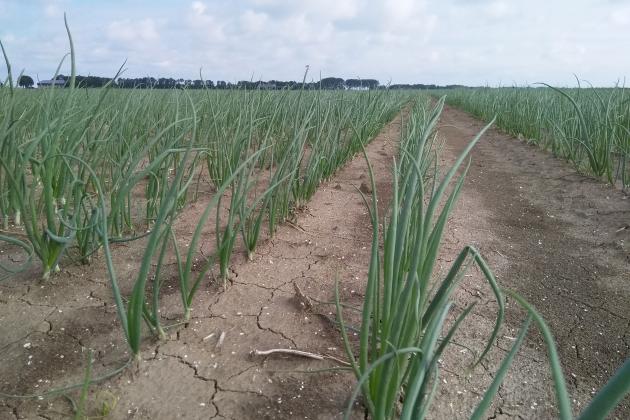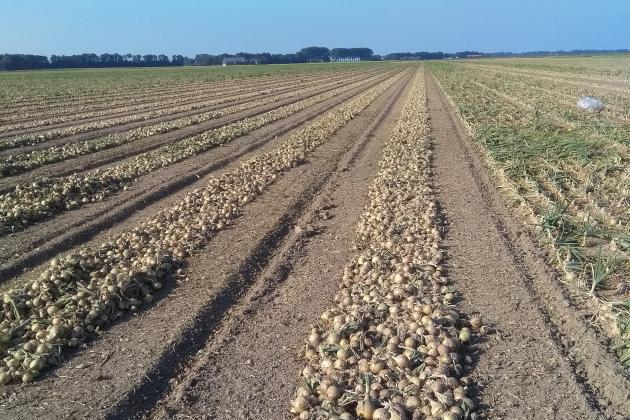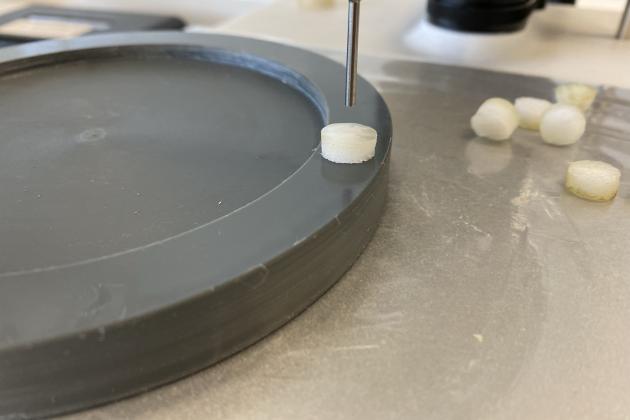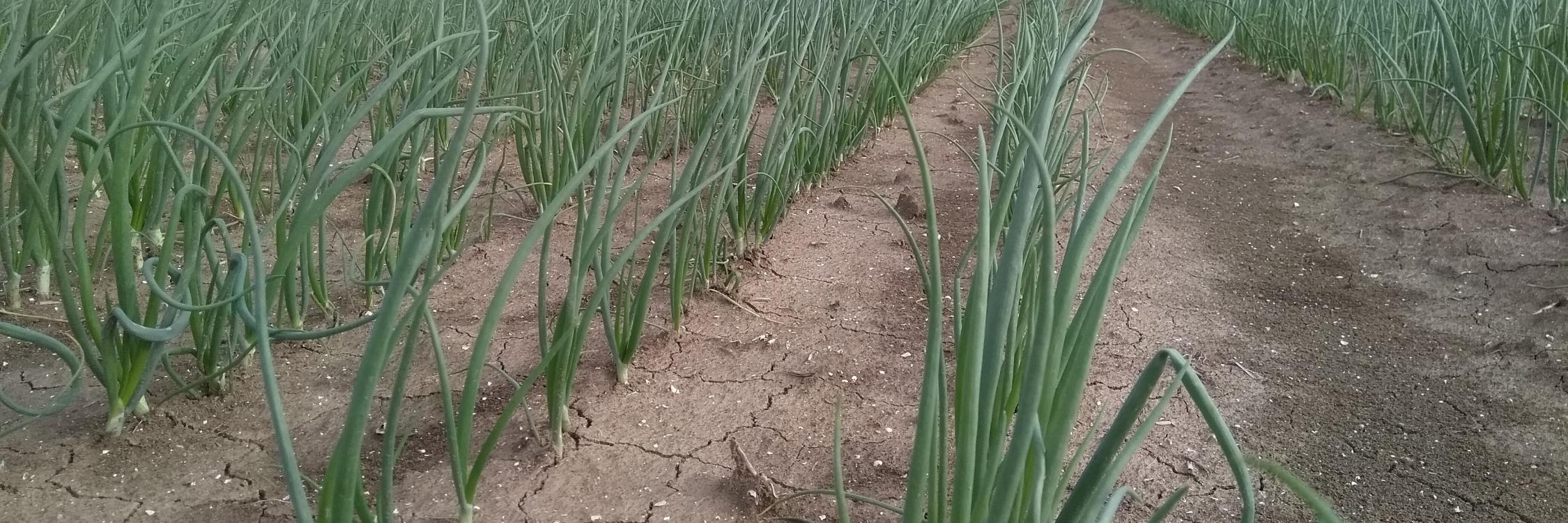
CaTs®, a new calcium fertilizer applied in onion cultivation
Calcium is an important element for plants in addition to nitrogen, potassium and phosphate. Often the amount of calcium in the soil is not a problem but the uptake can be limited. This is due to the presence of sulfate, carbonate and phosphate. Calcium compounds with these ions in fact dissolve poorly. Because of the divalent charge of calcium it is also strongly bound to the clay-humus complex in the soil.
Good experience has been gained abroad with the application of CaTs®, calcium thiosulfate (CaS2O3). CaTs® is a liquid fertilizer that contains, in addition to calcium, sulfur in the form of thiosulfate. Thiosulfate is converted into sulfate in the soil, releasing H+. This acidifying reaction makes calcium more readily available to the plant. At the same time, the calcium that is fixed in the soil becomes available to the plant.
Thiosulfate can also react as a reductor, releasing electrons. These electrons can convert 3-valent iron (Fe3+) and 4-valent manganese (Mn4+) into 2-valent iron (Fe2+) and manganese (Mn2+). This is important because only 2-valent iron and manganese can be absorbed by the plant.
Trials in the United States and Australia already showed an increase of about 10% when applying CaTs®. This was reason to look at the effect of CaTs® in onion cultivation in the Netherlands this year. Just after sowing, 50 liters of CaTs and 250 liters of water/ha were applied. One month later, 25 liters of CaTs® and 275 liters of water were applied. Another month later, another 25 liters of CaTs® and 275 liters of water were applied. For comparison, 100 liters of CaTs® with 200 liters of water was applied per hectare at the time of bulb formation (June 22). The trial took place at an arable farmer in the Dronten area with the cultivar Hyvive. The solution was sprayed with a coarse nozzle on top of the soil/crop.
On September 7, the onions were harvested. The average weight per onion for the control was 115 g, which was significantly lower than the weight of the treatment 1xCaTs® (127 g). No difference was observed for the 3xCaTs® (112 g). To determine the weight, 4x100 onions were weighed per treatment.
After 3 months storage the weight was determined again. The weight of the control was now 104 g. The onions with 1xCaTs® weighed on average 117 g. Also now there was a difference. Onions with 3xCaTs® weighed 103 g and were comparable with the control.
Besides the weight of the onions, the firmness was also examined. It was assessed at how much pressure a piece of onion tissue could be pressed together.
-
-
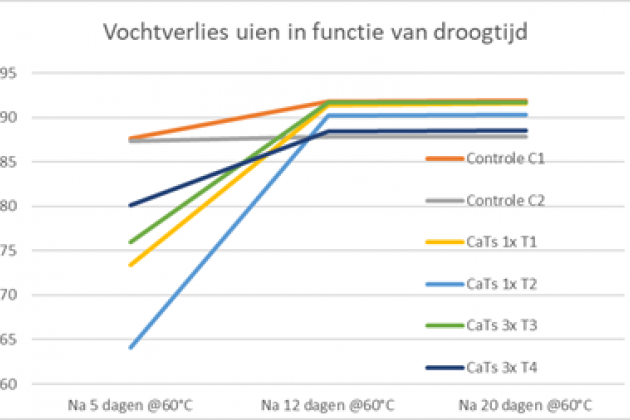
Moisture loss onions as a function of drying time
The firmness of the control was 10.1 N and significantly lower than that of the onions treated with 1xCaTs® (11.6 N). The measurement was performed after 3 months of storage. The onions with 3xCaTs® were also firmer (11.5 N).
After 3 months of storage, the calcium content of the onions was also determined. For this, the water first has to be extracted from the onions. For this purpose the onions are dried at 60 OC. After 5 days, much water had been withdrawn from the control than from onions that had received CaTs®. The largest effect was for the onions disadvantaged with CaTs® during onion formation. This could mean that onions with CaTs® could be stored longer than the control.
The difference in fluid loss can possibly be explained by the difference in calcium content. Calcium plays an important role in the firmness of the cell. The firmer the cell, the easier the onion can retain moisture. The too little is the weight loss when the onions are stored longer.
Clear differences were measured for calcium content.
100 liters of CaTs® at the time of onion formation gave the highest calcium content. A donation of 50 liters after sowing, 25 liters after 1 month and 25 liters after months gave a lower effect.
CaTs® appears to be a useful addition to the list of fertilizers to improve yield and firmness of onions.
